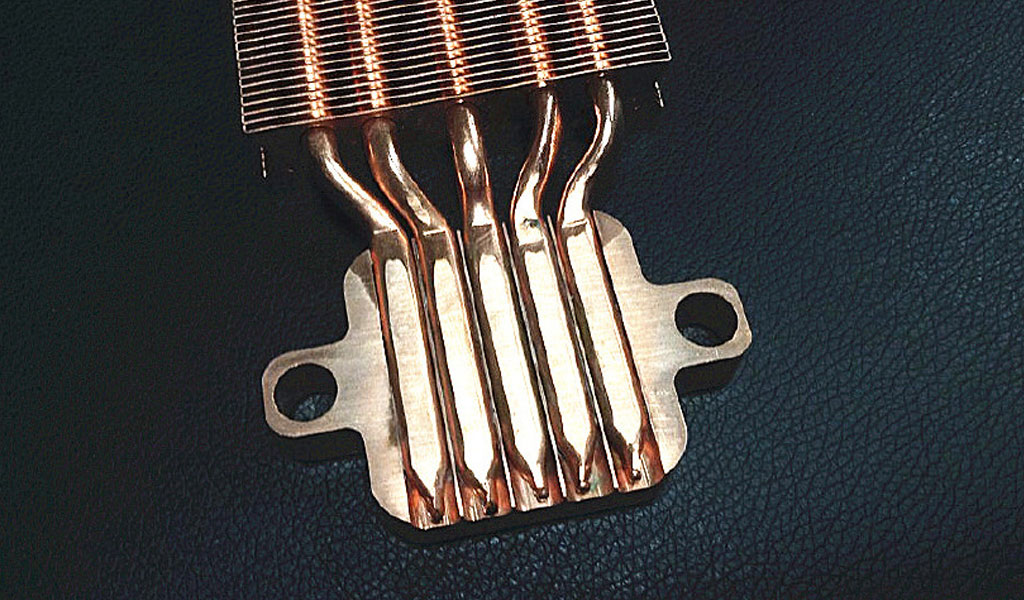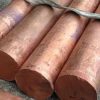
In the world of electronics and thermal management, heat sinks play a crucial role in dissipating excess heat generated by various components. Among the most commonly used materials for heat sinks are copper and aluminum. Each material has its own set of characteristics and benefits that make it suitable for specific applications. This article delves deep into the comparison between copper and aluminum heat sinks, exploring their thermal conductivity, cost-effectiveness, manufacturing processes, and performance in various scenarios.
The Battle of Thermal Conductivity
- Thermal Conductivity of Copper: Copper has long been heralded as a thermal conductivity champion among metals. With a thermal conductivity of around 385 W/mK, copper is highly efficient at rapidly conducting and spreading heat away from the heat source. This property makes copper heat sinks particularly effective in applications where instantaneous heat dissipation is crucial, such as high-performance CPUs and power amplifiers.
- Thermal Conductivity of Aluminum: While aluminum falls slightly behind copper in terms of thermal conductivity, with an approximate value of 237 W/mK, it is still a commendable heat conductor. Aluminum heat sinks find their place in scenarios where cost-efficiency and weight reduction are prioritized. The lower thermal conductivity is compensated by the ease of shaping and manufacturing aluminum heat sinks, which can be especially advantageous in applications that require intricate designs.
Cost Considerations
- Copper Cost: Copper is generally more expensive than aluminum, which can significantly impact the overall cost of producing heat sinks. The higher cost of copper is due to its availability, extraction processes, and demand in various industries, including electronics and construction. As a result, copper heat sinks might be preferred in situations where performance outweighs cost concerns.
- Aluminum Cost: Aluminum, on the other hand, is abundant and relatively inexpensive compared to copper. This makes aluminum heat sinks an attractive choice for applications where a balance between performance and cost-effectiveness is sought. Industries that require mass production, such as consumer electronics, often lean towards aluminum heat sinks to keep manufacturing expenses in check.
Manufacturing Complexities
- Copper Manufacturing: Manufacturing copper heat sinks can be intricate and challenging. Copper’s high thermal conductivity is matched by its high density, making it heavier and more difficult to machine than aluminum. The fabrication of copper heat sinks involves precise heat sink machining processes and specialized equipment, which can contribute to higher manufacturing costs.
- Aluminum Manufacturing: Aluminum’s lightweight nature and lower density simplify the manufacturing process. Machining and forming aluminum heat sinks require less energy and resources compared to copper. This ease of manufacturing translates to shorter production times and reduced expenses, making aluminum an appealing choice for heat sinks in various industries.
Performance in Different Applications
- Intensive Applications – Copper: Copper heat sinks shine in applications that demand exceptional thermal conductivity. High-performance computing systems, data centers, and industrial machinery benefit from copper’s ability to swiftly dissipate heat. These applications often require continuous operation under heavy loads, making copper’s heat conductivity vital for preventing thermal throttling and ensuring system stability.
- Consumer Electronics – Aluminum: Aluminum heat sinks find widespread use in consumer electronics due to their versatility and cost-efficiency. Devices such as laptops, LED displays, and home appliances generate heat on a smaller scale compared to industrial machinery. Aluminum’s ability to adequately manage heat in these scenarios, coupled with its lighter weight, makes it a practical choice.
Corrosion Resistance and Longevity
- Copper Corrosion Resistance: Copper has a natural tendency to develop a protective oxide layer, which enhances its corrosion resistance. This characteristic makes copper heat sinks suitable for applications where exposure to moisture and other corrosive elements is a concern. Copper’s durability ensures a longer lifespan for heat sinks operating in demanding environments.
- Aluminum Corrosion Resistance: Aluminum, while not as naturally corrosion-resistant as copper, can still be protected through various coating methods, such as anodization. These coatings form a barrier against environmental factors that might lead to corrosion. Properly coated aluminum heat sinks can have a satisfactory operational life, especially in controlled indoor environments.
Environmental Considerations
- Copper’s Environmental Impact: Copper mining and extraction processes can have notable environmental repercussions, including habitat disruption and water pollution. Additionally, the energy-intensive nature of copper production contributes to its carbon footprint. These factors have led industries to seek more sustainable alternatives, especially when copper’s exceptional thermal conductivity is not the primary requirement.
- Aluminum’s Sustainability: Aluminum is considered more environmentally friendly than copper due to its lower energy requirements during extraction and manufacturing. Moreover, aluminum is highly recyclable, allowing for reduced waste and resource conservation. In cases where performance can be met with aluminum heat sinks, opting for aluminum might align better with sustainability goals.
Making the Choice
The decision between copper and aluminum heat sinks ultimately depends on the specific needs of the application and the priorities of the industry. Copper’s superior thermal conductivity makes it indispensable in high-performance systems, where heat dissipation directly impacts performance and reliability. Aluminum, with its cost-effectiveness and ease of manufacturing, suits scenarios where a balance between performance and cost is sought.
Conclusion
In the ongoing debate of copper heat sinks vs. aluminum heat sinks, both materials have proven their worth in various applications. Copper’s unparalleled thermal conductivity makes it a top contender for demanding industrial settings, ensuring optimal performance and preventing thermal issues. On the other hand, aluminum’s cost-effectiveness and environmental sustainability make it an attractive choice for consumer electronics and situations where performance can be balanced with budget considerations.
As technology advances and industries continue to evolve, the choice between copper and aluminum heat sinks will remain a critical one. Balancing performance, cost, and environmental impact will drive the decision-making process, ensuring that the chosen heat sink material aligns with the goals and requirements of the application at hand.






